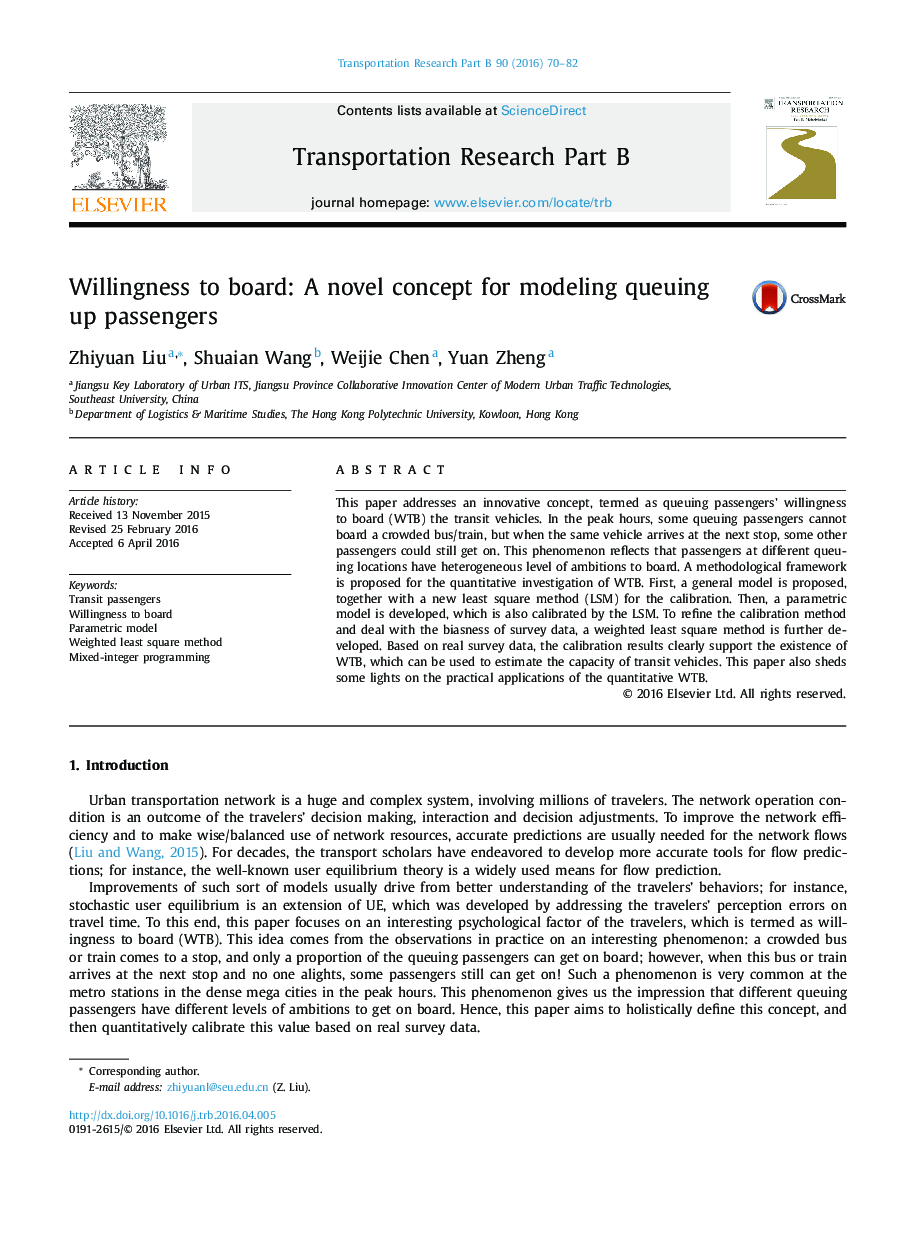| Article ID | Journal | Published Year | Pages | File Type |
|---|---|---|---|---|
| 7539426 | Transportation Research Part B: Methodological | 2016 | 13 Pages |
Abstract
This paper addresses an innovative concept, termed as queuing passengers' willingness to board (WTB) the transit vehicles. In the peak hours, some queuing passengers cannot board a crowded bus/train, but when the same vehicle arrives at the next stop, some other passengers could still get on. This phenomenon reflects that passengers at different queuing locations have heterogeneous level of ambitions to board. A methodological framework is proposed for the quantitative investigation of WTB. First, a general model is proposed, together with a new least square method (LSM) for the calibration. Then, a parametric model is developed, which is also calibrated by the LSM. To refine the calibration method and deal with the biasness of survey data, a weighted least square method is further developed. Based on real survey data, the calibration results clearly support the existence of WTB, which can be used to estimate the capacity of transit vehicles. This paper also sheds some lights on the practical applications of the quantitative WTB.
Related Topics
Social Sciences and Humanities
Decision Sciences
Management Science and Operations Research
Authors
Liu Zhiyuan, Wang Shuaian, Chen Weijie, Zheng Yuan,
